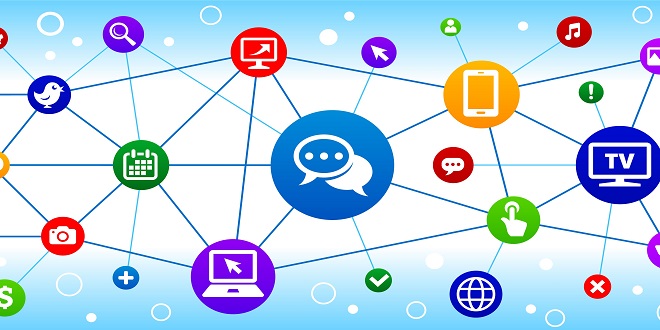
Neil Postman, author of Amusing Ourselves to Death, observed that a technology, any technology, is “to a medium as the brain is to the mind. Like a brain, a technology is a physical apparatus. Like the mind, a medium is a use to which a physical apparatus is put… Only those who know nothing of the history of technology believe that technology is entirely neutral” (1985, p. 84). In other words, the form in which an idea is expressed, the medium used to deliver or communicate it, affects what the idea can even be.
To think about what Postman was describing and to build toward a better understanding of the capacities of digital media, let’s consider the medium of television. TV operates with its own rhetoric, one that is predicated on a few essential qualities. Because screens are typically small—and with smartphones, video screens are even smaller—TV programming has to emphasize characters rather than the sweeping, epic dramas for which cinema is known.
For the big stories—think Iron Man, Star Wars, or Independence Day—we turn to motion pictures, which are shown in multi-speaker rooms with wall-sized screens, often in 3D, 4D, or IMAX. Because TV delivers moving images, its rhetoric is about experiencing something emotionally (pathos) and experiencing it right now. TV knows only one verb tense—the present. Even a documentary on the History Channel on World War II gives the viewer a present tense experience of the war.
The widely acclaimed “Snow Fall” package from The New York Times, for example, uses video clips of some of the skiing tragedy’s survivors to put the interact or and the survivor in the same room, in the present tense. Such immediacy is powerful, and it enables an emotional connection between interact or and subject. Snow Fall’s Flash-driven animation, on the other hand, is used to explain visually and in motion the power and punch of avalanches, while the multimedia package’s dazzling photography gives integrators poignant images to gaze at and to contemplate.
Even during the last few years, improvements in capacities for streaming and showing video have vastly improved. Download times have decreased while resolution and fidelity have gone up. The currency of the realm is still brevity, however, and attention spans are punishingly short; videos of only a few minutes are the norm. YouTube, for example, discourages videos longer than ten minutes. And there are other media choices: Flash presentations can combine text and pictures, video and audio, interactive buttons, and animated charts and graphs. Flash employs vector graphics, which means Flash does not require a lot of bandwidth—much less than video. Flash is also widely misused, often employed merely to generate eye candy.
While browser software often automatically updates integrators’ browsers for the latest plug-ins, not all browsers are always up to date, and any time integrators are required to take action, like updating or downloading software, the potential audience shrinks. Not everyone is willing or even able to take that action.
Our media choices are important. Establishing and communicating credibility are important, even to the life of an integrator’s own community. The civically engaged are more likely than the less engaged to use and value news, Pew found. Those who report having a strong connection to their communities consistently display stronger local news habits across a range of measures: news interest, news intake, and news attitudes. Americans who rate their local communities as excellent have more positive views of their news media than those who rate their communities less highly, and vice versa.
Ajker Somproday offers a diverse range of products and services to cater to the needs of modern consumers. With its user-friendly platform and top-notch customer service, it has gained popularity among shoppers. Whether it’s fashion, electronics, or groceries, Ajker Somproday is the one-stop destination for all your needs.





